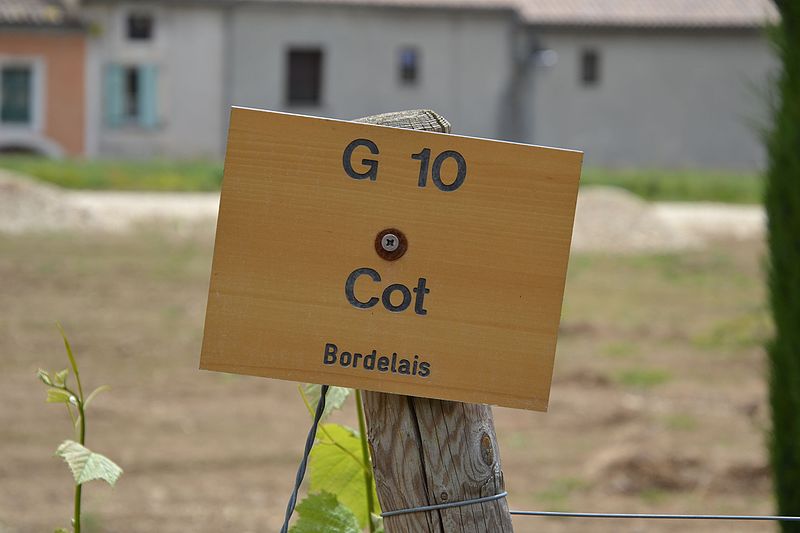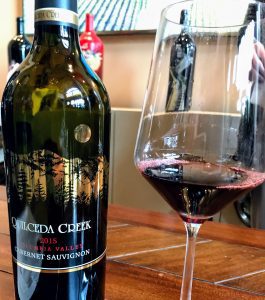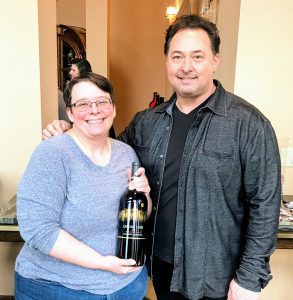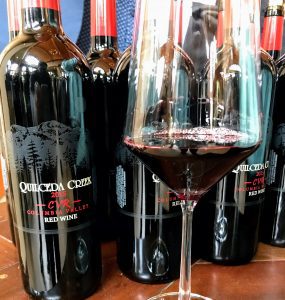 Continuing our celebration of the oddly named Malbec World Day we’re going to get geeky here at Spitbucket about the Malbec grape.
Continuing our celebration of the oddly named Malbec World Day we’re going to get geeky here at Spitbucket about the Malbec grape.
What’s In a Name?
In Jancis Robinson’s Wine Grapes, the entry for Malbec is under Cot (or Côt) because of the association with grape’s likely birthplace in the region of Cahors in the historical province of Quercy in southwest France. Ampelographers note that like Côt many of the other early names for the grape such as Cos, Cau, Cor and Cors all seem to be contractions of Cahors.
However, the first written account of Malbec was in Pomerol in 1761 as Noir de Pressac (black of Pressac). The name likely referred to the individual who first cultivated the vine. From Pomerol, the grape made its way to the Left Bank region of the Medoc. Here it took on the new name of Èstranger (stranger) or Estrangey.
The name Malbec came from a grower named Malbeck who propagated the grape in what is now known as Sainte-Eulalie in the Premières Côtes de Bordeaux AOC of the Entre-Deux-Mers region.
When a Mommy Grape and a Daddy Grape Cross-Pollinate…
In 2009, DNA analysis discovered that Magdeleine Noire des Charentes–the mother grape of Merlot (Check out the Academic Wino’s Who’s Your Daddy? series on Merlot)– and an obscure grape from the Tarn department called Prunelard were the parent varieties of Malbec.
In addition to being a half-sibling of Merlot, Malbec has done a bit of its own “cross-pollinating” being a parent grape to Jurançon noir (with Folle blanche) and Caladoc (with Grenache).
Malbec in Bordeaux

Malbec used to be far more prevalent in the Bordeaux region. In fact, Stephen Brook noted in The Complete Bordeaux that it was the most widely planted grape in the vineyards of Lafite in the 18th century. Many estates classified in 1855 had Malbec account for as much as 50% of their blends in the early 19th century.
However, the latter half of the 19th century would usher in the decline of the variety due to its sensitivity to coulure and mildew. Following the devastation of phylloxera, many growers who did replant chose to replace Malbec. The easier to grow Cabernet Sauvignon and Merlot were favored choices. Into the 20th century, Malbec was still present, particularly in the Right Bank. However, the devastating frost of 1956 killed off a significant number of plantings. This practically signaled the death knell for the grape in Bordeaux.
There are still some small plantings in Bordeaux. The most significant strongholds are the Côtes de Bourg and Côtes de Blaye. In St. Emilion, Cheval Blanc and Jean Faure are two notable estates with some plantings of Malbec. In Pomerol, Chateau L’Enclos (owned by the Adams family who also owns Chateau Fonplegade in St. Emilion) also maintain some Malbec.
On the Left Bank, a 1 ha block of old-vine Malbec is still producing for Ch. Gruaud Larose in St. Julien. Fellow 2nd Growth, Ch. Brane Cantenac in Margaux grows a few parcels of Malbec (as well as Carmenère). In the Graves region of Pessac-Leognan, Ch. Haut Bailly owns a 4 ha block of 100+-year-old vines that includes a field blend of all six Bordeaux varieties–including Malbec and Carmenère.
Malbec in Argentina

Malbec vines growing in Argentina.
Michel Pouget introduced Malbec to Argentina, bringing pre-phylloxera cuttings of the grape from Bordeaux to the country in the 1850s.
Compared to their French counterparts, clusters of Malbec in Argentina are smaller with tighter berries. These smaller grape berries have a skin-to-juice ratio that produces deeply colored wines with intense black fruit.
The Bordeaux influence in Argentina is still felt today with producers like like Léoville Poyferré (Cuvelier de Los Andes), Michel Rolland (Clos de los Siete), Cheval Blanc (Cheval des Andes), Hélène Garcin-Lévêque (Poesia) and Lafite-Rothschild (CARO) having projects in Argentina making both varietal Malbec and using it in Bordeaux style blends.
Malbec in the United States
The grape is widely planted throughout the US including in states like Missouri, Idaho, Georgia, Arizona, Virginia, North Carolina, New York, Maryland, Texas and Michigan. Here it is made as both as a varietal wine and as a blending component.
In Napa Valley, despite being a regular feature of popular blends like Opus One and Joseph Phelps Insignia, Malbec is sometimes considered the “Gummo Marx” of the Bordeaux varieties. Part of the grape’s low standing in the region was historically due to poor clonal selection. However, as better clones from Cahors and Argentina become available, growers in Mt. Veeder, Coombsville and Atlas Peak are increasing plantings.
Outside of Napa, Malbec is widely planted in the San Joaquin Valley where it is used for mass-produced bulk blends. However, there are quality minded producers making varietal Malbec wines throughout the state. Key areas include Paso Robles, Dry Creek Valley, Santa Ynez, Lodi and the Sierra Foothills.

Red Willow Vineyard in Washington State.
In Washington State, Malbec has the distinction of being the most expensive grape per ton. The average price for a ton of Malbec in 2016 was $1,587. In contrast, Cabernet Sauvignon was $1,442/ton, Merlot $1,174/ton, Chardonnay $940/ton and Semilion (the most expensive white grape) at $1,054 ton.
While Red Willow Vineyard in the Yakima Valley helped pioneer the grape in Washington State, Paul Gregutt in Washington Wines and Wineries: The Essential Guide notes that Casey McClellan of Seven Hills Winery was the first to plant the grape in Walla Walla in the early 1990s.
Want More Malbec?
Check out the hashtags #MalbecWorldDay and #WorldMalbecDay on Twitter and the Malbec tag on Instagram for more fun.

 If you ask Washington wine lovers what are the “cult wines” of Washington–the Screaming Eagles, the Harlans or the Grace Family Vineyards of the state–one name that would be unanimously mentioned is
If you ask Washington wine lovers what are the “cult wines” of Washington–the Screaming Eagles, the Harlans or the Grace Family Vineyards of the state–one name that would be unanimously mentioned is 



